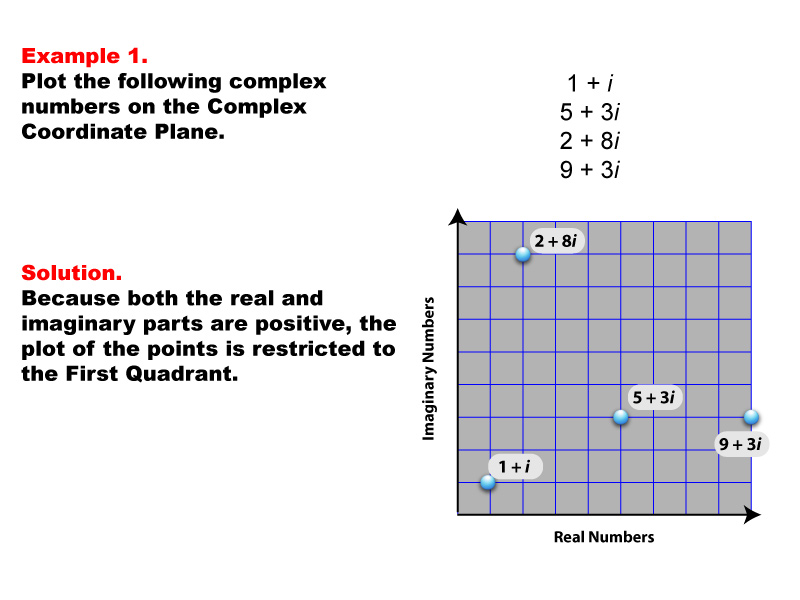
Display Title
Math Example--Complex Numbers--Complex Coordinates--Example 1
Display Title
Math Example--Complex Numbers--Complex Coordinates--Example 1

Topic
Complex Numbers
Description
The image shows a complex plane with points plotted in the First Quadrant. The complex numbers plotted are 1 + i, 5 + 3i, 2 + 8i, and 9 + 3i. Both real and imaginary parts are positive, so all points are in the First Quadrant. Example 1: The caption explains that since both real and imaginary parts of the complex numbers are positive, the points are restricted to the First Quadrant. The complex numbers plotted are: 1 + i, 5 + 3i, 2 + 8i, and 9 + 3i.
Complex numbers allow for a two-dimensional representation of numbers using real and imaginary components. Examples like these help students grasp how to plot complex coordinates, understanding both real and imaginary axes.
Seeing multiple worked-out examples is crucial for students to fully understand complex concepts like plotting complex numbers. Through varied examples, students can see consistent patterns and learn effective strategies.
Teacher’s Script: Imagine a number line that moves in two directions--right and up. Each complex number has a place on this plane, just like how we plot coordinates. Let's use this example to practice reading and plotting complex coordinates.
For a complete collection of math examples related to Complex Numbers click on this link: Math Examples: Complex Coordinates Collection.
| Common Core Standards | CCSS.MATH.CONTENT.HSN.CN.B.4, CCSS.MATH.CONTENT.HSN.CN.B.5, CCSS.MATH.CONTENT.HSN.CN.B.6 |
|---|---|
| Grade Range | 9 - 12 |
| Curriculum Nodes |
Algebra • Expressions, Equations, and Inequalities • Numerical and Algebraic Expressions |
| Copyright Year | 2020 |
| Keywords | complex numbers |